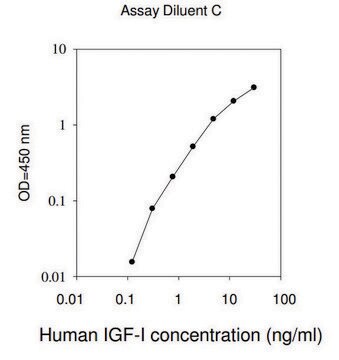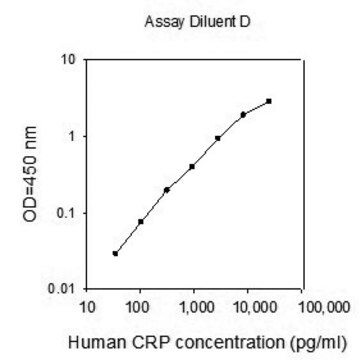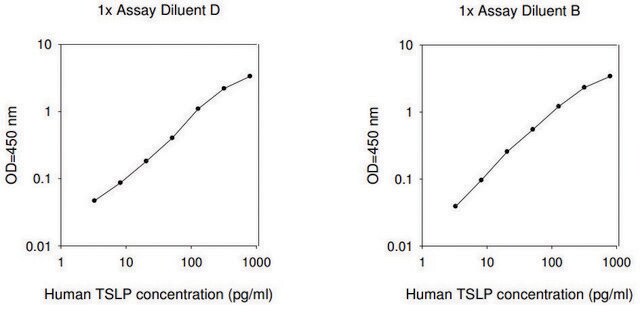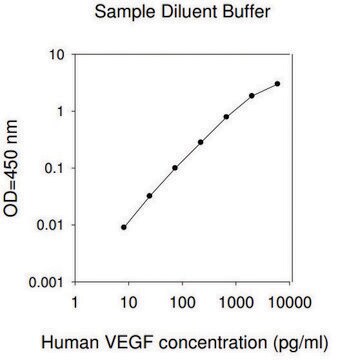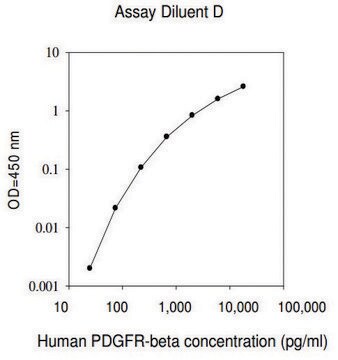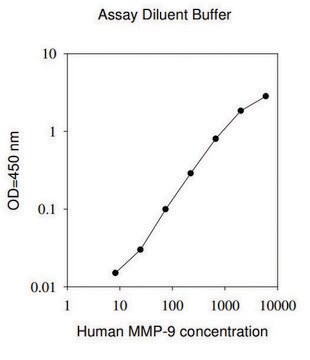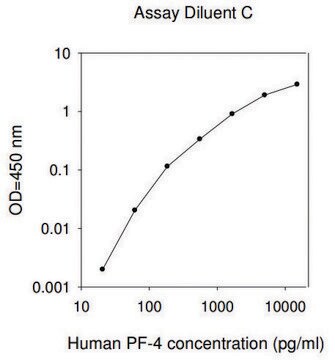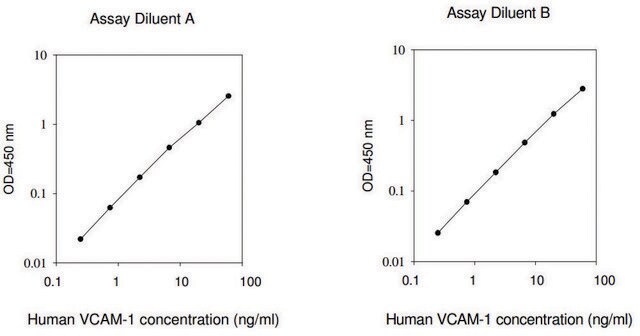Alle Fotos(1)
Wichtige Dokumente
RAB0736
Human SDC1 / Syndecan-1 ELISA Kit
Anmeldenzur Ansicht organisationsspezifischer und vertraglich vereinbarter Preise
Alle Fotos(1)
About This Item
UNSPSC-Code:
41116158
NACRES:
NA.32
Empfohlene Produkte
Speziesreaktivität
human
Verpackung
kit of 96 wells (12 strips x 8 wells)
Methode(n)
ELISA: suitable
Aufnahme
sample type cell culture supernatant(s)
sample type serum
sample type plasma
assay range
inter-assay cv: <12%
intra-assay cv: <10%
sensitivity: 14 pg/mL
standard curve range: 16.38-4000 pg/mL
Nachweisverfahren
colorimetric
Versandbedingung
wet ice
Lagertemp.
−20°C
Angaben zum Gen
human ... SDC1(6382)
Allgemeine Beschreibung
The antibody pair provided in this kit recognize human Syndecan-1/CD138.
Anwendung
For research use only. Not for use in diagnostic procedures.
Please refer to the attached General ELISA KIT Procedure (sandwich, competitive & Indirect ELISA)
Please refer to the attached General ELISA KIT Procedure (sandwich, competitive & Indirect ELISA)
Sonstige Hinweise
A sample Certificate of Analysis is available for this product.
Please type the word sample in the text box provided for lot number.
Please type the word sample in the text box provided for lot number.
Signalwort
Warning
H-Sätze
P-Sätze
Gefahreneinstufungen
Met. Corr. 1
Lagerklassenschlüssel
8A - Combustible corrosive hazardous materials
Flammpunkt (°F)
Not applicable
Flammpunkt (°C)
Not applicable
Hier finden Sie alle aktuellen Versionen:
Besitzen Sie dieses Produkt bereits?
In der Dokumentenbibliothek finden Sie die Dokumentation zu den Produkten, die Sie kürzlich erworben haben.
Lawrence N Diebel et al.
The journal of trauma and acute care surgery, 84(4), 575-582 (2017-12-30)
Early resuscitation after trauma-hemorrhagic shock with plasma rather than crystalloid may ameliorate systemic endothelial cell (EC) injury and dysfunction (endotheliopathy of trauma). We postulated that endothelial-lined microfluidic networks would be a useful platform to study the EC activation/injury under flow
Mark E Diebel et al.
The journal of trauma and acute care surgery, 84(1), 75-80 (2017-10-19)
The endothelial glycocalyx (GCX) plays an important role in vascular barrier function. Damage to the GCX occurs due to a variety of causes including hypoxia, ischemia-reperfusion, stress-related sympathoadrenal activation, and inflammation. Tranexamic acid (TXA) may prevent GCX degradation. The therapeutic
Jonathan V Martin et al.
American journal of surgery, 214(6), 1166-1172 (2017-10-05)
Geriatric trauma patients have high circulating norepinephrine (NE) levels but attenuated release of epinephrine (Epi) in response to increasing severity of injury. We hypothesized that NE and Epi have different effects on the endothelial and glycocalyx components of the vascular
Josephine Koch et al.
American journal of physiology. Renal physiology, 316(1), F121-F127 (2018-11-01)
Syndecan-1, a transmembrane heparan sulfate proteoglycan, associates with renal and cardiovascular functioning. We earlier reported syndecan-1 to be involved in renal tubular regeneration. We now examined plasma values of syndecan-1 in a hemodialysis cohort and its association with volume and
Kohji Uzawa et al.
Journal of anesthesia, 34(1), 36-46 (2019-10-17)
Fluid therapy focused on glycocalyx (GCX) protection in hemorrhagic shock is a current focus of research. Hydroxyethyl starch (HES) solution is commonly used for fluid resuscitation; however, its effects on the GCX remain unclear. The primary aim of this study
Unser Team von Wissenschaftlern verfügt über Erfahrung in allen Forschungsbereichen einschließlich Life Science, Materialwissenschaften, chemischer Synthese, Chromatographie, Analytik und vielen mehr..
Setzen Sie sich mit dem technischen Dienst in Verbindung.